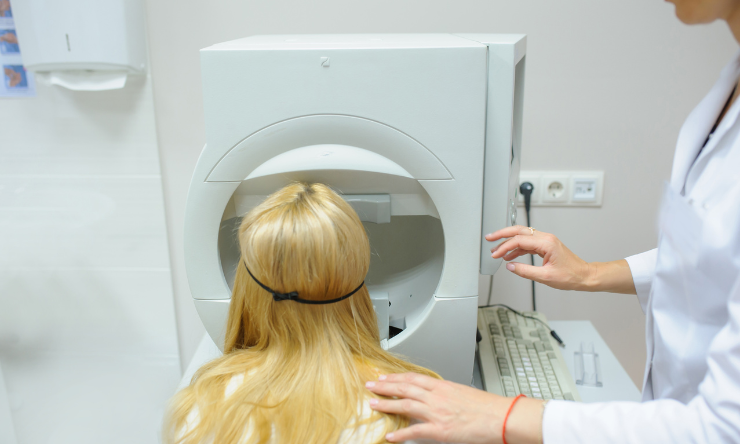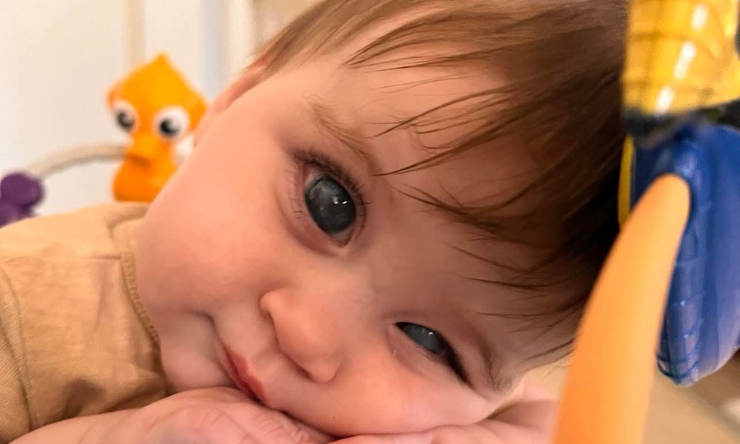Share
When I was thirteen I was diagnosed with an eye condition called Keratoconus, it was bilateral and worse in my left eye, I was prescribed glasses.

At sixteen my sight began to get much worse and I was told that I would need a corneal transplant and went on a waiting list in 1985.
In November of 1987 when I had just one last exam to do for the completion of year 12 HSC/VCE I got a phone call saying they had finally found me a suitable donor.
The surgery was put back a few days so that I could finish my last exam, as I had already been waiting two years so what was one more week. Thankfully nowadays the time frame for corneal donation is months and not years.
Fast forward my life to one morning in June 2008 when I awoke and noticed a sudden loss of vision in my left eye. I rang my corneal surgeon who had performed my first corneal transplant and he stated that it had started to reject (after 21 years). This meant having to take a lot of steroid eye drops to try reverse it.
Although some sight came back after using drops, the graft could not be saved. My surgeon who had been treating me for over twenty years was no longer operating, so he referred me to see his protégé. I had been put on a corneal graft wait list for my right eye just before this all happened.
After extensive use of steroid drops (and most likely some stress) I had two bouts of herpes keratitis episodes in my left eye which occurred within six months apart. When my eye eventually healed and it was deemed safe to do a repeat corneal transplant the surgery was done in May 2010.
Within a couple of years (2012) a cataract formed (most likely from frequent use of steroid drops) and my sight started to deteriorate again in that left eye where I could no longer tell if it was day or night. My blue eye looked white, and so cataract surgery was required. Lucky for me my corneal surgeon was also proficient in dealing with cataracts as well.
Over time I noticed my peripheral vision deteriorating whereby I would have to completely turn my head to see what was on my side, especially when crossing roads etc. When closing my right eye the colour seen from my left eye was drab, best described as similar to sepia mode. It was obvious something was wrong.
I was referred to a glaucoma surgeon and was diagnosed with secondary glaucoma and put on drops to reduce my pressure. Somehow I then also became allergic to Alphagan and had to change IOP eye drops.
Eventually the drops were no longer working so I had a Baerveldt tube inserted in June 2013. My pressure has mostly been stable since the tube insertion and I have now also been able to cease IOP eye drops.
In 2014, my left eye started to see hazy and cloudy, it seemed a cloudy layer was forming behind the lens implant so I had a YAG Capsulotomy.
Within two years of this procedure my left corneal transplant failed only after five years so another corneal graft was performed in 2016. Within three months after the transplant surgery and with increased use of steroid drops, I did have an episode where my IOP went up to 49 which was causing a lot of pain, discomfort and I felt quite nauseous.
Although being a person with sensitive skin has had many drawbacks in my life (i.e. no makeup, no perfume having to use unscented soap etc) in this case it was an advantage, as I was able to feel that something was very wrong.
I immediately rang my corneal surgeon who was able to fit me in between his surgeries that very day (to which I am eternally grateful for). I was given Diamox tablets and had an intracameral injection of triacinolone acetonide in my left eye which gave me immense relief almost instantaneously.
In May 2017 my glaucoma tube surgery had to be redone, as the sclera holding the tube in place had basically deteriorated with the increase steroid use which I needed to use for my new grafted cornea. Unfortunately my left eye wasn't healing at all well, so within three weeks another surgery was needed that would be a conjunctival advancement and graft suture.
To complicate matters further and throw another curve ball into the equation, during this operation a hole was discovered in my eye which meant having to get hold of some spare corneal tissue from the corneal bank to "fill in the hole".
In 2018 my glaucoma surgeon thought that my eyelids should be lowered to protect my tube and corneal grafts. This eyelid surgery has been a disaster to say the least and has not gone according to plan.
I've now been informed (after surgery) that I also have eye thyroid disease which makes eyelid surgery difficult to do in trying to get the eyelids to sit in the desired position. So far my left eye has been done three times and I will be leaving that eye alone now, as it is sitting in a reasonably good position that covers the sclera holding my tube in place.
My right eye has been done twice so far, as the first time my eyelid ended up becoming lowered way too much whereby my eye practically looked closed. I then had it lifted a little just recently (march 2021) but now it is has gone too high and is exposing my graft and putting it at risk.
At the moment I am listed as category 2 awaiting for my right eyelid to be lowered. Fingers crossed for third time lucky in this eye, I hope.
I have not mentioned the problems with my right eye as it is glaucoma free thank goodness but I have had both a corneal transplant, cataract and laser surgery performed in the right eye. It is my better eye and what I predominantly see out of.
I haven't described the many incidents of hydrops, along with episodes of macular edema, epithelial defects or the time I got a bacterial infection called serratia liquefaciens in my left eye but needless to say that the trauma and many surgeries in my left eye over the course of my life is what caused my secondary glaucoma.
I am so grateful to live in a country where we have access to medical technology that can be used to save sight, and I am so thankful to all the wonderful medical staff that work so hard for their patients.
I am so appreciative to be able to buy mostly affordable medication that is required to keep my sight and to the generosity of family members who help facilitate organ donation, so that people like myself can receive the gift of sight.
I have no doubt forgotten to mention someone or a group of people but I am thankful and always optimistic about the future.
I am so grateful to live in a country where we have access to medical technology that can be used to save sight...Michelle


